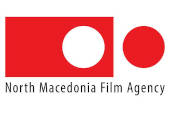A film set in Russia about Lada automobile production may not sound like the most riveting topic for a documentary. But Petr’s Horký’s directorial debut is a fascinating and wryly amusing tale. Set in Tolyatti, the city where the Lada factory is based, The Russian Job follows the attempts of hard-hitting Swedish businessman, Bo Andersson, to revolutionise the once-thriving company and drag it by the collar into the 21st century. Through intimate – and beautifully shot – glimpses into the lives of both Andersson and those factory workers he is antagonizing, we learn just how monumental his task is. He doggedly competes with corruption, xenophobia and more than anything, the grim Soviet shadow that still looms over Europe’s biggest country.
The Russian Job will be a part of the delegation led by the Institute of Documentary Film and we caught up with him to tell us all about it.
You've made a Czech film about the Russian Lada company. How did that happen?
In the fall of 2014 I was working as a journalist for one Czech economic newspaper and I was invited to visit the Lada factory in Tolyatti to write an article about it. There I met this pragmatic, hard-working Swedish manager who was bringing about very dramatic changes to this rather sleepy place. A man of the capitalist world trying to westernize a post-Soviet relic. I wrote the article, but the theme and the images stuck in my head. With my friend, who is a photographer, we asked the manager if we could make a documentary about this reform process. And he said yes.
What were the most surprising discoveries for you personally during your filming?
It surprised me how everything in the city is revolving around the factory. Almost everyone you meet has in his life worked in the plant or at least knows someone there. At every step you can feel that the city was built around the factory. There is a huge sports stadium, summer and winter resorts for the workers, the factory even has its own TV channel. And most people in Tolyatti remember the communist past as the best time of their life.
The film shows the hard-hitting business side of Bo Andersson. Do you think you managed to portray his more sensitive side also?
Mr Andersson is very straight forward in his attitude towards his employees and his task, but at the same time he is a very careful person. We got much closer than any other journalist, we had very open discussions with Mr Andersson, which is unusual for people of such high corporate position. But at the same time Mr Andersson was always very aware of the camera, we never really caught him off-guard.
In what way does the film explore Russian stereotypes?
I think you are being polite! You could even say that we exploit the Russian stereotypes! In our film the locals are sentimental of their past, sometimes they are lazy, sometimes proud, they like to do things for display, white wash. But they also can enjoy their time, they have their way of life, they dip in the frozen water and they have a good time rowing a boat on the Volga river no matter what regime comes.
How would you describe the atmosphere of the film?
I am now too close to the film and can’t see it clearly anymore, but at times I see a comedy with tragical subtones and at other times a tragedy with a comical streak. So it’s probably something in between.
The film features the Walruses – an eccentric group of Russians who swim in ice cold water. Why did you decide to include them?
The bathing club used to be part of the Avtovaz factory. We thought the micro story of the snowblower could illustrate the complicated relations between the foreign managers and the locals.
Do you find any similarities with the life and mentality of people in the Czech Republic?
I think in the Czech Republic you can also find many people who live in the past and in a state of collective denial, but it is not as concentrated as in Tolyatti.
The film is beautifully shot. What are your filmmaking influences?
I think this is a question that should be answered by our cinematographer Milan Bureš. He is a photographer and that creates a lot of the style. 99 percent of the shots were taken from a tripod and carefully composed. This style has its limitations, but also big advantages. We didn’t have any particular influence in our mind, but many people compare the style to the films of Ulrich Seidel. We also like the style of Vitalij Manskij.
What have you got planned next?
I don’t have any specific plans, but I would like to get back to the original question: where is the border between the East and the West?
Petr Horký
Studied journalism in Prague. Moved to London to graduate in photojournalism, but never pursued career as a photographer. Moved to Berlin to learn German, then to Prague. Worked for a daily economic newspaper. Spent year as a blogger travelling around Asia. After returning home, found a job at an economic weekly magazine which enabled him to go deeper in his stories. One story lead him to Russia where he encountered a subject he thought worthy to be made into a documentary film. Crucial role in this decision one meeting with his friend, photographer Milan Bureš who agreed to become the cameraman of the film.
The Russian Job is produced by Martin Jůza - Krutart, co-produced by Kateřina Ondřejková - Czech Television
Sales: Rise and Shine World Sales




















